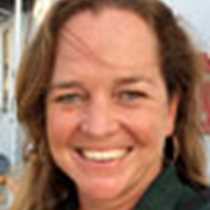Today was marked by an astonishing change in our surroundings, as the Sea Bird left the arid Columbia Plateau behind and followed the "Great River of the West" along the path it has carved through the Cascade Mountain range to eventually pour into the Pacific Ocean. President Thomas Jefferson thought that this river would prove to be the mythical Northwest Passage: he had hoped there would be a convenient route between the Missouri and Columbia rivers which would help establish the US claim to the disputed territories. He sent Meriwether Lewis and William Clark on a mission to explore the unknown west, thus filling great blanks in the maps and bring back a wealth of information that would prove invaluable in the future. Although the explorers soon found out there was no easy route to the Pacific, they described and named hundreds of new species of plants and animals, as well as rivers, mountains and other landmarks. They, like us, undoubtedly relished the change of scenery from the very dry steppes east of the Cascades, to the temperate rainforest found through the gorge and west of the mountain chain. These wet coastal forests are separated from the dry interior scrub by only a few miles, yet the variation caused by the rain shadow of the Cascades is so great they could belong to another planet. It is said that for every mile one advances down the gorge, it rains an inch more per year, and in the last couple of days we have traveled from areas that receive barely 7 inches of rain a year to areas that receive over 70 inches!
As we left the ship above The Dalles dam this morning, we went to discover more about these fascinating phenomena in the relatively new and beautifully designed Columbia Gorge Discovery Center. It was around here we started seeing our first trees, which increased in number as we drove along the Historic Columbia River Highway. These ranged from the evergreen Ponderosa pines and Douglas firs to the broadleaf maples and garry oaks, both first described to science by Lewis and resplendent in their fall colors. Whilst some of us went to explore the picturesque Hood River, others visited a stretch of the scenic highway no longer in use by cars, but recently restored for hikers and bikers. Here we braved the elements in true Lewis and Clark style, and rode bicycles or walked amongst the tall trees, overlooking spectacular vistas of the river. After a chili for lunch that just hit the spot, we learned more about the over-wintering of the Corps of Discovery at Fort Clatsop and cruised through the spectacular gorge en route to the Pacific Ocean.




